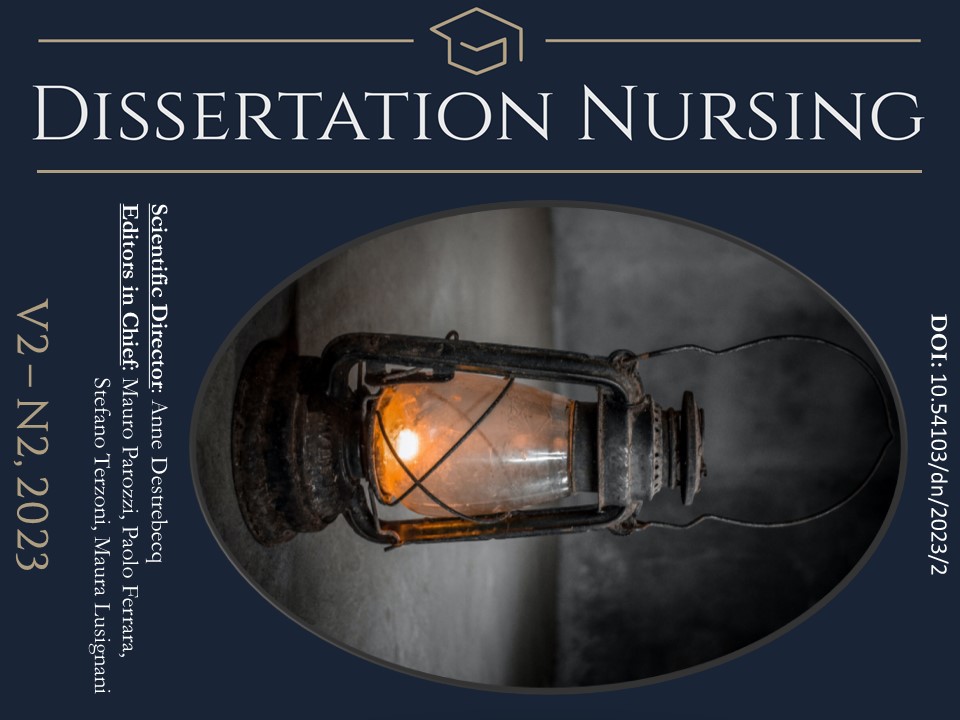Validation and cross-cultural adaptation of a tool to evaluate safety climate in the operating room
DOI:
https://doi.org/10.54103/dn/20000Keywords:
safety attitudes questionnaire, operating room, safety culture, work environment, validationAbstract
Safety culture in the operating theatre is only systematically assessed with validated instruments in a few settings: the aim of the study is to adapt the Safety Attitudes Questionnaire OR Version (SAQ-OR) to the Italian context. The Italian-translated version was tested on 48 workers and a group of experts for face and content validity [Content Validity Index (I-CVI); Scale Validity Index (S-CVI)]; internal consistency was assessed with Cronbach's Alpha; stability test-retest was evaluated with Pearson's index. Fifty-six out of fifty-nine items were considered clear by at least 80% of the sample: unclear items were re-evaluated. Eight items had I-CVI less than the threshold of 0.8, and were reevaluated. S-CVI = 0.9; Cronbach's Alpha = 0.95; Pearson's index = 0.861. The linguistic-cultural adaptation into Italian of the SAQ-OR is a starting point for testing its construct validity.
References
Pattni N, Arzola C, Malavade A, Varmani S, Krimus L, Friedman Z. Challenging authority and speaking up in the operating room environment: a narrative synthesis. Vol. 122, British Journal of Anaesthesia. 2019. DOI: 10.1016/j.bja.2018.10.056
Wahr JA, Prager RL, Abernathy JH, Martinez EA, Salas E, Seifert PC, et al. Patient safety in the cardiac operating room: Human factors and teamwork: A scientific statement from the american heart association. Circulation. 2013;128(10).
Molina G, Berry WR, Lipsitz SR, Edmondson L, Li Z, Neville BA, et al. Perception of Safety of Surgical Practice among Operating Room Personnel from Survey Data Is Associated with All-cause 30-day Postoperative Death Rate in South Carolina. Ann Surg. 2017;266(4).
Zhao P, Li Y, Li Z, Jia P, Zhang L, Zhang M. Use of patient safety culture instruments in operating rooms: A systematic literature review. J Evid Based Med. 2017;10(2). DOI: 10.1111/jebm.12255.
Sexton JB, Makary MA, Tersigni AR, Pryor D, Hendrich A, Thomas EJ, et al. Teamwork in the operating room: Frontline perspectives among hospitals and operating room personnel. Anesthesiology. 2006;105(5).
De Andrade Lourenção DC, Tronchin DMR. Patient safety in the surgical environment: Translation and cross-cultural adaptation of validated instrument. ACTA Paulista de Enfermagem. 2016;29(1).
Nguyen G, Gambashidze N, Ilyas SA, Pascu D. Validation of the safety attitudes questionnaire (short form 2006) in Italian in hospitals in the northeast of Italy. BMC Health Serv Res. 2015;15(1).
Beaton DE, Bombardier C, Guillemin F, Ferraz MB. Guidelines for the process of cross-cultural adaptation of self-report measures. Vol. 25, Spine. 2000.
Sousa VD, Rojjanasrirat W. Translation, adaptation and validation of instruments or scales for use in cross-cultural health care research: A clear and user-friendly guideline. Vol. 17, Journal of Evaluation in Clinical Practice. 2011. DOI: 10.1111/j.1365-2753.2010.01434.x.
Bernalte-Martí V. Cross-cultural Adaptation of the Safety Attitudes Questionnaire Short Form in Spanish and Italian Operating Rooms: Psychometric Properties. J Patient Saf. 2022;18(3). DOI: 10.1097/PTS.0000000000000902.
Downloads
Published
How to Cite
Issue
Section
License
Copyright (c) 2023 Deborah Maselli

This work is licensed under a Creative Commons Attribution-NonCommercial-NoDerivatives 4.0 International License.
Accepted 2023-05-31
Published 2023-07-31











